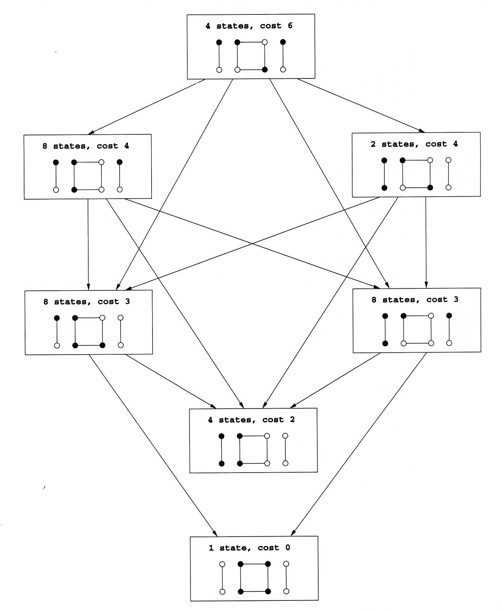



The figure below shows a small instance of graph partitioning, along with the search space of solutions. There are a total of 70 possible states, but since each of them has an identical twin in which the left and right sides of the cut are flipped, in effect there are just 35 solutions. In the figure, these are organized into seven groups for readability. There are five local optima, of which four are bad, with cost 2, and one is good, with cost 0. If local search is started at a random solution, and at each step a random neighbor of lower cost is selected, then the search is at most four times as likely to wind up in a bad solution than a good one. Thus only a small handful of repetitions is needed.
